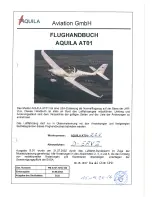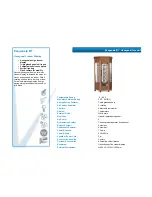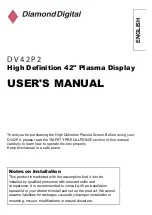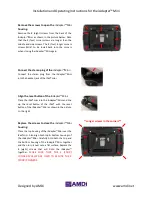
Cockpit Reference Guide for the Cirrus SR2x with Perspective Touch+ by Garmin
190-02954-01 Rev. A
179
Additional Features
Flight
Instruments
EIS
Nav/Com/
XPDR/Audio
Flight
Management
Hazar
d
Avoidance
AFCS
Additional
Featur
es
Annun/Alerts
Appendix
Index
Flight
Instruments
EAS
Audio and
CNS
Flight
Management
Hazar
d
Avoidance
AFCS
Additional
Featur
es
Abnormal
Oper
ation
Annun/Alerts
Appendix
Index
Configuring Stabilized Approach settings:
1)
From MFW Home, touch
Utilities > Setup > Avionics Settings.
2)
Touch the
Alerts
Tab.
3)
Scroll down to view the
Stabilized APPR Inhibit
Button and touch the adjacent
Settings
Button.
4)
Touch the
Flap Override
Button to override the ‘Flaps Not in Landing Configuration’
Alert.
Or
:
Touch the
Wind Inhibit
Button to prevent the Crosswind Alert and the Tailwind Alert
from being displayed.
Or
:
Touch the
GS/GP Inhibit
Button inhibit the Vertical Deviation Alerts.
ELECTRONIC STABILITy & PROTECTION (ESP) (OPTIONAL)
The pilot can interrupt ESP by pressing and holding the Autopilot Disconnect (
AP DISC
)
Switch. Upon releasing the
AP DISC
Switch, ESP force will again be applied, provided aircraft
attitude, angle of attack and/or airspeed are within their respective engagement limits. ESP can
also be overridden by overpowering the servo’s mechanical torque limit.
Enabling/disabling ESP:
1)
From MFW Home, touch
Utilities
>
Setup
>
Avionics Settings
.
2)
On the
System
Tab, scroll to display the
Stability & Protection
Button.
3)
Touch the
Stability & Protection
Button to enable or disable ESP. A green annunciator
on the button indicates ESP is enabled.
ESP is automatically enabled when power is applied to the system.
DATABASE MANAGEMENT
CAUTION:
Never disconnect power to the system when loading a database. Power
interruption during the database loading process could result in maintenance being
required to reboot the system.
NOTE:
To improve database security, the following databases are digitally signed
and must pass digital signature verification before the system will accept an upload
through an SD card or through the Wireless Transceiver (Flight Stream 510): Airport
Directories, Basemap, Navigation, Obstacles, SafeTaxi, Terrain, ChartView, FliteCharts,
and IFR/VFR.












































